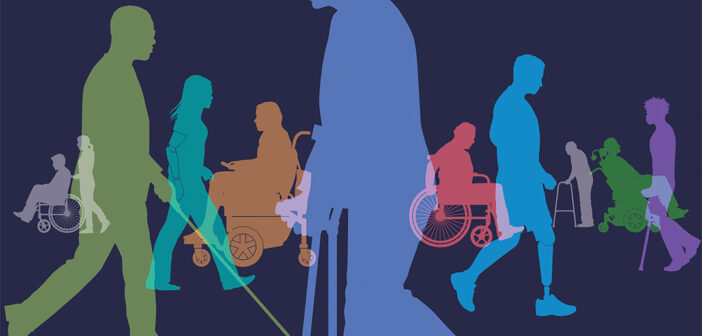Students want better care for people with disabilities.
At its core, good medical care is about communication. But what if a patient describes their symptoms using American Sign Language, or needs to navigate an exam differently to accommodate a disability?
To better prepare medical students for such patient visits, Nicole Bencie ’19 MD’24 is leading an initiative to establish a more concrete disability justice curriculum at the Medical School.
Bencie is working with fellow students, faculty, and community members to weave disability justice content throughout the curriculum and include people with disabilities to inform and participate in training sessions.
Around a quarter of people in the US have disabilities, so increasing “the diversity of [standardized]patients that you’re seeing … normalizes this idea that you could walk in and that could be your patient,” Bencie says.
“Disability justice was certainly an area that we had started to explore, but we did not have, I think, a very robust curriculum. We knew there was room to grow,” says Steve Rougas MD’09 RES’13, director of the Doctoring program. He and Dana Chofay RES’98, MD, the first-year Doctoring course leader, as well as Sarah Skeels, MPH, an occupational therapist who lectures at Brown, are mentors for Bencie’s project.
In a new Doctoring session in November—which Bencie developed with Katie Chiou ’21 MD’25—first-year students heard from people with disabilities and discussed subjects such as ableism, misconceptions, disability-related health disparities, and solutions.
Bencie and her colleagues also worked with the Rhode Island Commission on the Deaf and Hard of Hearing (RICDHH) to invite around a dozen community members and ASL interpreters for a session for second-years.
Christine West, project director of the Healthcare System Transformation Project at RICDHH, says that, when working with patients who are deaf, hard of hearing, or deafblind, there is a “lack of understanding of the communication needs of these communities” and of health care providers’ roles in this dialogue.
In the second-years’ session, students learned how to work with ASL interpreters and practiced interviewing and doing an exam on standardized patients who were deaf, hard of hearing, or deafblind and preferred differing methods of communication.
“We really didn’t want to create this one-size-fits-all solution,” Bencie says. “It was up to the medical students to walk into the room and figure out as a team with the patient and the interpreter … how to make it a more accessible encounter.”
Bencie hopes these components will become entrenched in the preclinical curriculum and continue in the clinical years. For example, she is planning an intersession day for third-years that will focus on disability, intersectionality, and race. She also wants to host lectures featuring speakers with disabilities.
By incorporating community voices, “our students can hear their lived experiences, their personal narratives, the barriers they have overcome, and what could have been done differently and better for the patient,” Chofay says.
“Disability comes from medical marginalization a lot of times, and it’s our job as physicians to break it down and recognize that we need to support these people socially and understand their experiences in order to treat them as an entire human being, just like you would any other patient,” Bencie says.




